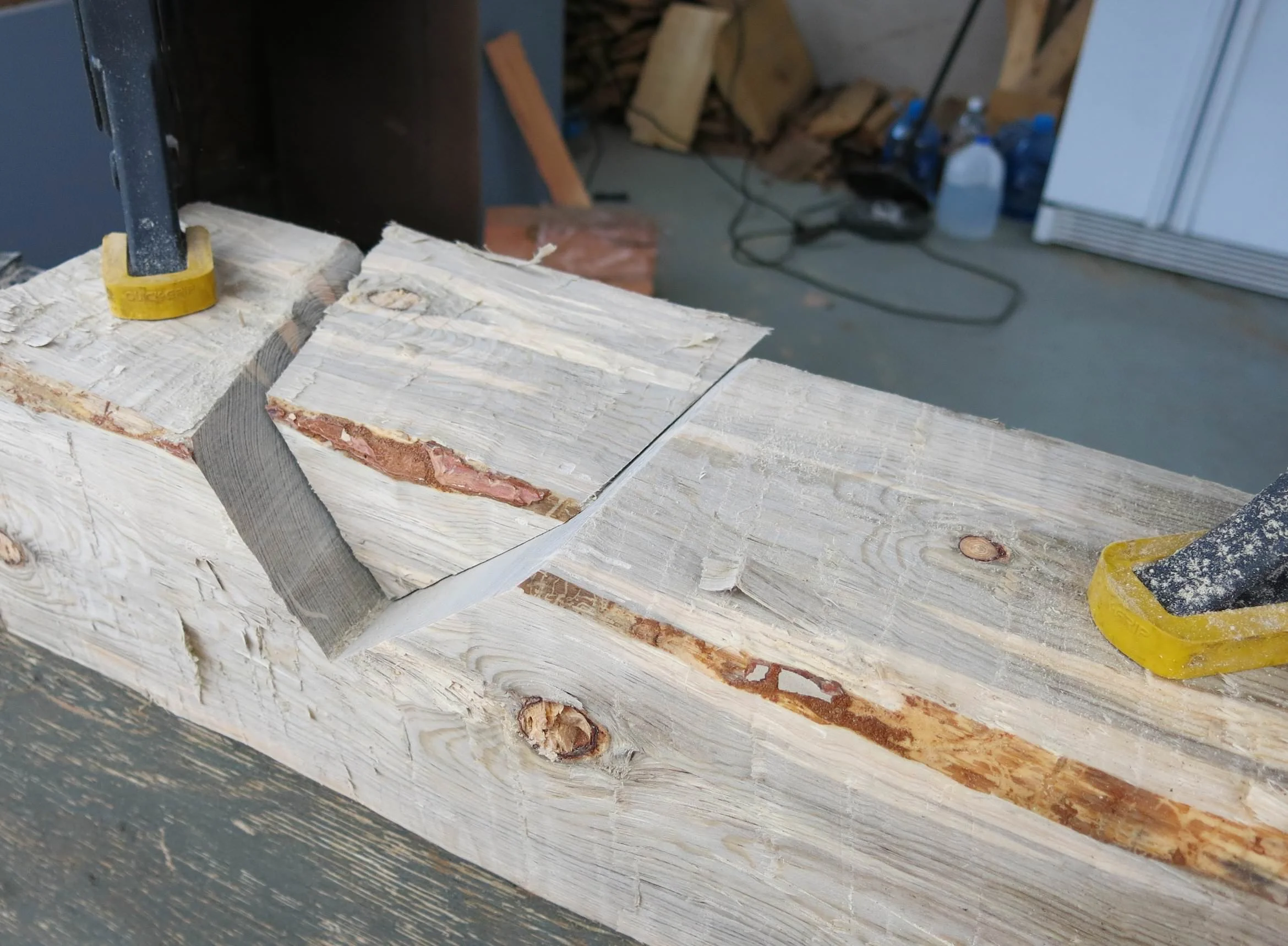
With my chainsaw, Harvesting dead trees in the forrest.

After having found the perfect piece of Ponderosa pine, this is how I start a Zigzag piece. With an axe working my way in to a square piece of wood.

With my japanese precision saw I start the first cuts.

The heartwood in the middle has a nice pinkish colour while the sapwood has a darker blue gray tone. This blue gray colour comes from blue stain fungus. It's really beautiful and will not decay, now that I have taken it out of the rain to dry properly. Sometimes I am lucky to find the wood at the stage when it has exactly this colour. Not too much and not too little.

After having shaped the wood into a ZigZag relief - by cutting from both sides, and sanding it smooth and nice - I let it absorb linseed oil. That brings out the contrasts of the colors and it also helps it not dry too fast. Depending how wet the wood is, I may wrap it in a plastic bag for a while, to prevent cracking.
